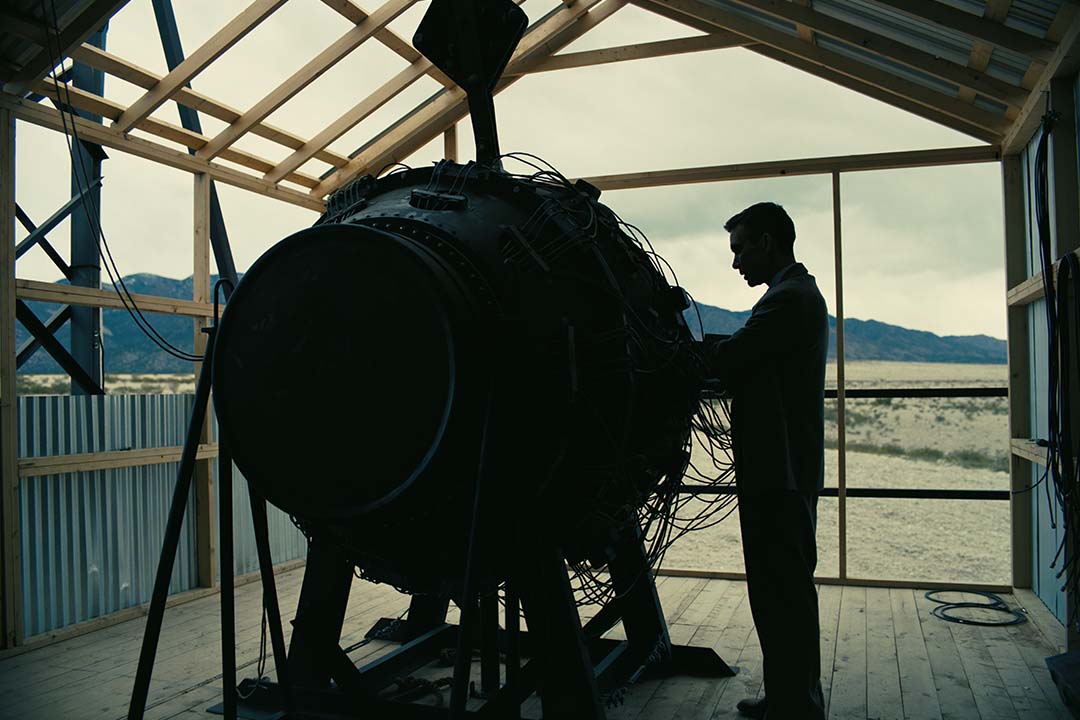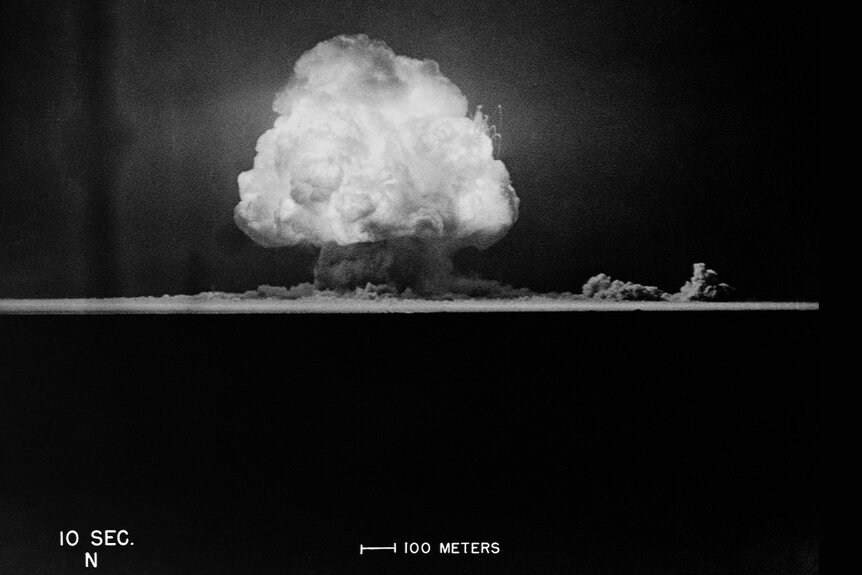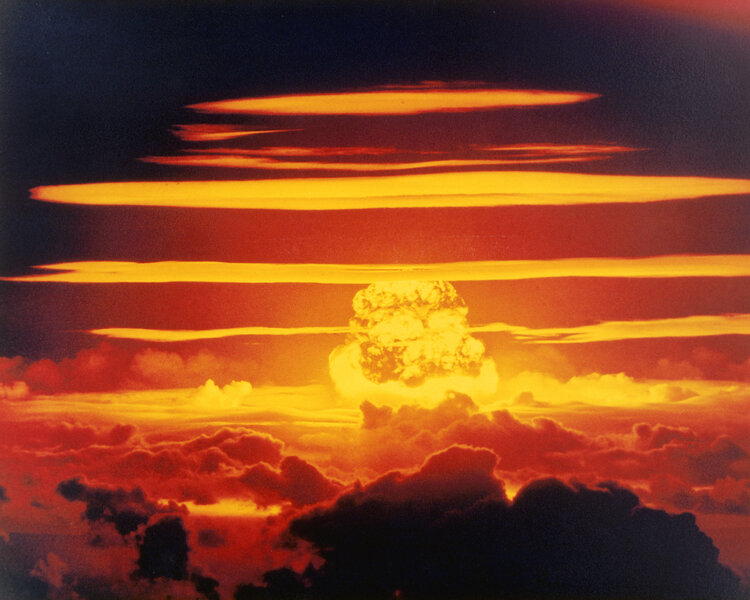Create a free profile to get unlimited access to exclusive videos, sweepstakes, and more!
Oppenheimer: What's the Difference Between Atomic Bombs, Hydrogen Bombs and Nuclear Bombs?
What's in a bomb name? Let's get into the differences between thermonuclear, atomic, nuclear, hydrogen, and dirty bombs.

Christopher Nolan’s Oppenheimer is blowing up the box office (in part through its odd juxtaposition with Barbie) and many of us are reckoning with our atomic heritage for the first time in a long time. The activities of J. Robert Oppenheimer and his team at Los Alamos forever changed the face of the world and the nature of war with the introduction of atomic weapons.
Today, there are several different types of radioactive explosives. You’ve likely heard of atomic bombs, nuclear bombs, hydrogen bombs, thermonuclear bombs, neutron bombs, and dirty bombs. Those terms get tossed about by military officials and newscasters, often with little context, leaving the rest of us with only a vague notion of radioactive danger.
RELATED: Oppenheimer’s Atomic Bombs Marked a New Geologic Age of Humans
The truth is, there are really only two types of nuclear weapons broadly speaking — atomic bombs and thermonuclear bombs — and the rest all fall under one of those categories, or else aren’t really nuclear weapons at all.
What Is an Atomic Bomb?
When you’re at the theater, crunching popcorn and watching Oppenheimer, these are the kinds of weapons you’re going to see. Atomic bombs like the ones developed at Los Alamos, rely on fission, the splitting of heavy nuclei into smaller ones, for their explosive power.
If you can coax a heavy element to split into two smaller ones, excess energy is released into the atmosphere during the transition. If you have enough fissionable material around, that energy can strike another nucleus, causing the next atom to split, releasing more energy and continuing the cycle. Getting enough fissionable material packed densely enough to create a chain reaction is referred to as reaching critical mass.
Little Boy and Fat Man, the only two atomic bombs to be used during wartime, relied on uranium-235 and plutonium-239 for their reactions. Inside Little Boy were two disparate chunks of uranium-235, each too small to reach critical mass. At the moment of detonation, the two pieces were fired at one another, triggering a critical mass and a deadly explosion.
Fat Man, however, relied on the less reactive plutonium-239 and couldn’t use the firing method to trigger a detonation. Instead, the plutonium was surrounded by a sphere of conventional explosives which detonated all at once. The powerful implosion compressed the plutonium, increasing its density and achieving critical mass.
While they used different materials and methods to achieve critical mass, both Little Boy and Fat Man were atomic bombs, because they utilized the fission of heavy atoms to go boom.
What Is a Thermonuclear Bomb?
In contrast to the earlier atomic bombs, thermonuclear bombs (often called hydrogen bombs) rely on fusion instead of fission. This process is closer to Doc Ock than Doc Opp. Instead of splitting heavy atoms into lighter ones, fusion works by mushing two light elements into a heavier one. They are commonly called hydrogen bombs because they use the hydrogen isotopes deuterium or tritium, the same stuff used in fusion reactors, to fuel them.
RELATED: Scientists Have Achieved the First Ever Energy-Positive Fusion Reaction! So What Does That Mean?
The explosive power of a thermonuclear bomb can be hundreds or thousands of times more powerful than atomic bombs. While the force of the bombs dropped on Hiroshima and Nagasaki were measured in kilotons (one thousand tons) of TNT, the force of thermonuclear bombs is measured in megatons (a million tons).
While they are a different class of nuclear weapon, thermonuclear bombs often have smaller atomic bombs inside of them. That’s because the fusion reaction they need to achieve requires incredible amounts of heat and pressure.
Similar in construction to the Fat Man atomic bomb, thermonuclear bombs begin with the fission of plutonium facilitated by a sphere of conventional explosives. When the explosives detonate inward, they compress the plutonium causing fission. That reaction further compresses the core of the bomb where hydrogen fuel made of tritium and deuterium is housed. Once enough heat and pressure is achieved in the core, hydrogen atoms begin to fuse into helium, just like in the core of the Sun, releasing neutrons, gamma, and X-rays.
Despite their incredible explosive power, thermonuclear bombs can be made small enough to easily transport. In fact, the smallest of them are referred to as neutron bombs because of the neutron radiation they release. Because neutron radiation falls away quickly, neutron bombs can be used to target specific locations while minimizing the impact to surrounding areas and populations.
What Is a Dirty Bomb?
Dirty bombs are often spoken of in the same tones as nuclear weapons because they do pose some risk of exposure to radiation. However, they are different from true nuclear weapons in one critical way.
RELATED: How Exactly Did Oppenheimer's Special Effects Team Recreate an Atomic Blast Without CGI?
While atomic bombs and thermonuclear bombs derive their power from the atomic interactions of fission or fusion, a dirty bomb is not so powerful. There aren’t any nuclear reactions happening inside of a dirty bomb. Instead, they rely on conventional explosives mixed together with radioactive materials. When the bomb goes off, the radioactive materials are spread throughout the blast zone. Importantly, the blast zone and the downstream fallout is significantly lower than with an actual nuclear weapon.
Officials note that the real danger of a dirty bomb isn’t the radiation, but the initial blast and the ensuing panic. You’re more likely to die trying to flee the area, or from stress-related illness, than you are from the bomb itself.
For better or worse, they all started at Los Alamos. See the origin story of the bomb in Oppenheimer, in theaters now.
















